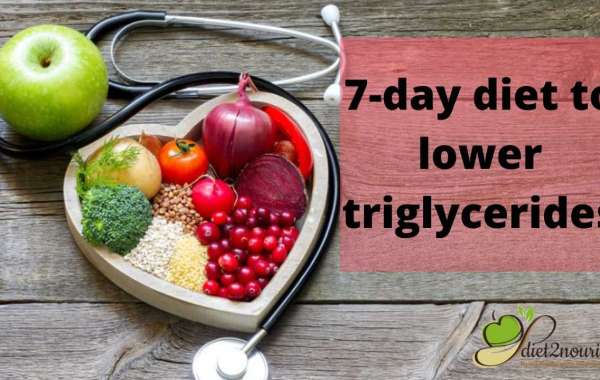High triglyceride levels are associated with an increased risk of heart disease and other health complications. Here's a comprehensive guide to a diet to lower triglycerides
Reduce Saturated and Trans Fats: Limit your intake of saturated fats and trans fats, as they can raise triglyceride levels. Avoid fried foods, fatty cuts of meat, full-fat dairy products, and processed snacks. Instead, opt for lean protein sources like skinless poultry, fish, legumes, and low-fat dairy. Choose healthier cooking methods such as grilling, baking, or steaming.
Choose Healthy Fats: Incorporate healthy fats into your diet, specifically monounsaturated fats and polyunsaturated fats. These fats can help lower triglycerides and promote heart health. Include sources such as avocados, olive oil, nuts, seeds, and fatty fish like salmon, mackerel, and sardines. Aim to replace saturated fats with these healthier fat options.
Increase Omega-3 Fatty Acids: Omega-3 fatty acids have been shown to reduce triglyceride levels. Include fatty fish like salmon, mackerel, and sardines in your diet at least twice a week. If you don't consume fish, consider adding flaxseeds, chia seeds, walnuts, and algae-based supplements that are rich in omega-3 fatty acids.
Emphasize High-Fiber Foods: Fiber helps lower triglycerides by slowing down the absorption of sugars and fats in the bloodstream. Include plenty of fruits, vegetables, whole grains, legumes, and seeds in your diet. Opt for whole grain bread, brown rice, quinoa, and oats. Consume a variety of fiber-rich foods to reap their full benefits.
Limit Added Sugars and Refined Carbohydrates: High sugar intake and refined carbohydrates can raise triglyceride levels. Avoid sugary beverages, desserts, and processed snacks. Choose whole fruits instead of fruit juices and opt for whole grains instead of refined grains. Read food labels to identify hidden sources of added sugars and make informed choices.
Control Portion Sizes: Be mindful of your portion sizes to avoid overeating and consuming excess calories. Even healthy foods can contribute to elevated triglyceride levels if consumed in large amounts. Use measuring cups, plates, and food scales to ensure appropriate portion sizes for different food groups.
Moderate Alcohol Consumption: Alcohol can significantly raise triglyceride levels. If you drink alcohol, do so in moderation. It is recommended to limit alcohol intake to moderate levels, which means up to one drink per day for women and up to two drinks per day for men. If possible, consider avoiding alcohol altogether to achieve the best results.
Stay Hydrated: Proper hydration is crucial for maintaining healthy triglyceride levels. Drink plenty of water throughout the day and limit the consumption of sugary beverages. Water helps flush out toxins, aids digestion, and supports overall well-being.
Regular Physical Activity: Engaging in regular physical activity is beneficial for lowering triglycerides. Aim for at least 150 minutes of moderate-intensity aerobic exercise per week, such as brisk walking, jogging, cycling, or swimming. Regular exercise can help reduce triglyceride levels, improve heart health, and promote overall well-being.
Consult with a Healthcare Professional: It is important to consult with a healthcare professional, such as a doctor or registered dietitian, for personalized advice. They can assess your specific health needs, provide tailored dietary recommendations, and monitor your progress. They may also suggest additional lifestyle changes or prescribe medication if necessary.








